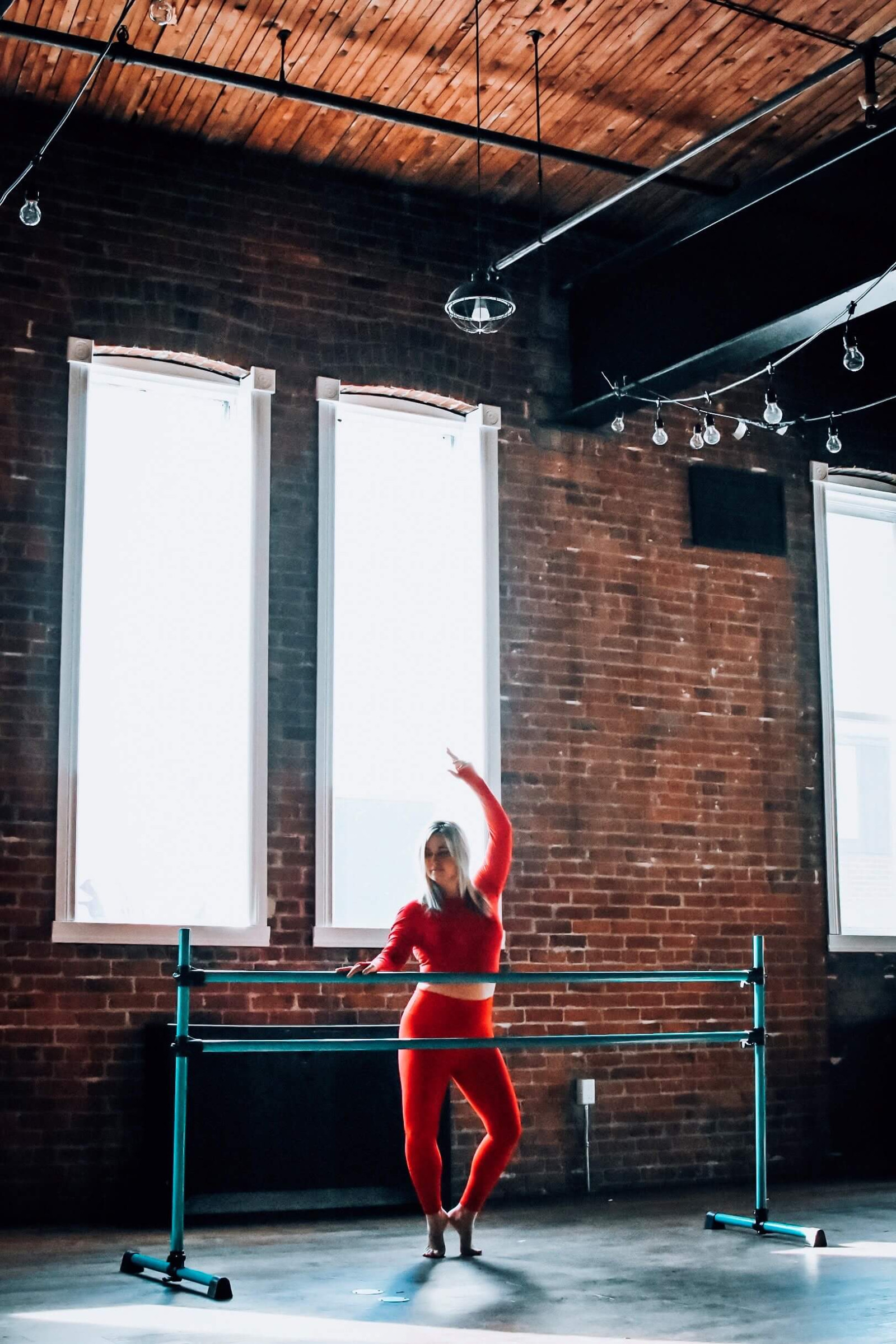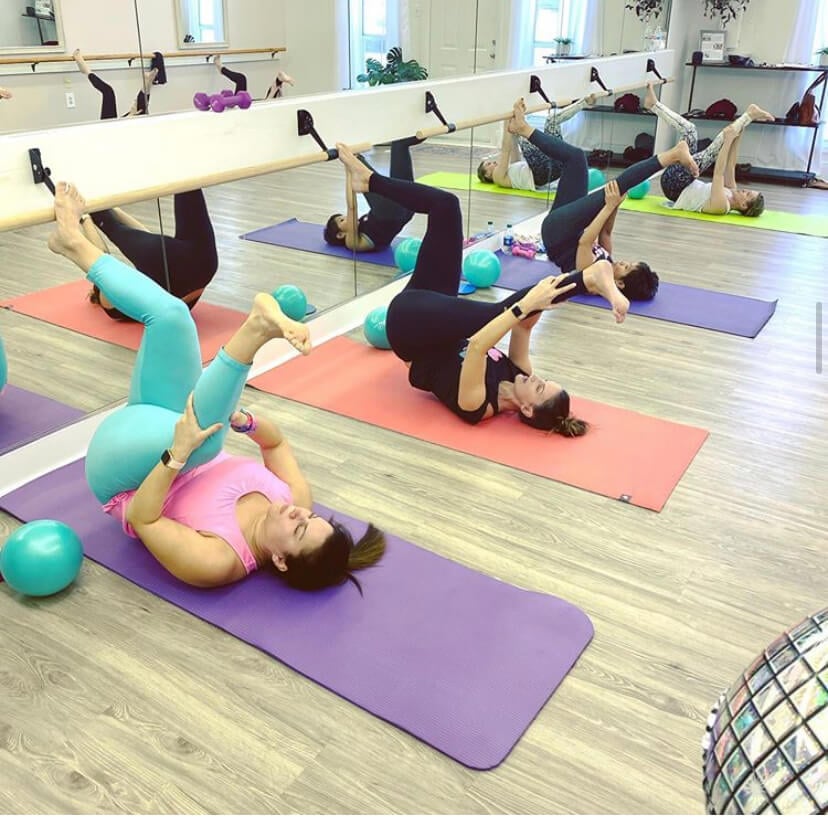Ballet Barres vs. Barre Fitness: What's the Difference?
10/15/2024 7:00pm

In the ever-evolving landscape of fitness, the terms "ballet barres" and "barre fitness" frequently surface, leaving many to ponder whether these terms refer to the same concept or if they embody distinct approaches to exercise. Both concepts are deeply rooted in the tradition of ballet, yet they cater to different facets of physical conditioning and wellness. To truly understand how these terms relate to each other—and how they can each contribute to a balanced fitness routine—it’s essential to explore their unique origins, purposes, and the ways they can enrich your exercise regimen.
Ballet Barres and Their Historical Roots: The term “ballet barre” refers to a fundamental apparatus in ballet training. Originally, the ballet barre emerged from the early ballet studios of the 19th century, designed to provide dancers with a stable support system to practice their movements and refine their technique. This horizontal bar, usually mounted on the wall at hip height, is not just a physical tool but a symbol of the dedication and precision inherent in ballet. The ballet barre assists dancers in developing balance, alignment, and muscle engagement, serving as a crucial element in their technical training.
Understanding Ballet Barres
Ballet Barres: The term “ballet barre” refers to a fundamental piece of equipment used in ballet training, and its importance cannot be overstated. A ballet barre is essentially a horizontal bar, usually mounted on the wall at hip height, that serves as an essential support tool for dancers. Its design and purpose are deeply rooted in the tradition of ballet, where it plays a crucial role in helping dancers develop the strength, balance, and technique necessary for both basic and advanced movements. Typically, a ballet barre is constructed from wood or metal and is installed at a height that aligns with the dancer's hips. The standard height ensures that dancers can comfortably hold onto the barre while maintaining proper alignment and posture. In professional ballet studios, the barre is often mounted along the walls of the studio in a continuous line, allowing multiple dancers to use it simultaneously. The barres may also be adjustable in height or modular, offering flexibility in setup and accommodating different needs.
Purpose and Function: In ballet, the barre serves multiple purposes:
- Support and Balance: Dancers use the barre to support themselves while executing movements that require precision and balance. It allows them to focus on technique without the worry of falling or losing stability.
- Warm-Up and Technique: Barre exercises are integral to warming up and perfecting technique. They help dancers develop strength, flexibility, and control through a series of structured movements.
- Rehabilitation and Conditioning: For dancers recovering from injury or looking to enhance their strength, the barre provides a controlled environment to build muscle and improve joint stability.
Examples of Ballet Barre Exercises:
- Plies: Basic bending and stretching of the knees to strengthen the legs.
- Tendus: Extending the foot to strengthen the legs and improve flexibility.
- Relieves: Rising onto the balls of the feet to build calf strength and balance.
Exploring Barre Fitness
This technique is a modern workout trend that combines elements of ballet, Pilates, and strength training. While it utilizes the ballet barre as a tool, it is distinct from traditional ballet in its approach and objectives. Barre fitness classes are designed to provide a full-body workout that emphasizes muscle endurance, flexibility, and core strength.
Purpose and Function: Barre fitness classes aim to offer a comprehensive workout with the following benefits:
- Total Body Conditioning: Barre Fitness focuses on toning and strengthening various muscle groups through low-impact, high-intensity exercises. The workout is designed to target specific areas, such as the core, glutes, and thighs, to achieve a balanced physique.
- Improved Flexibility and Posture: The combination of stretching and strengthening exercises in barre fitness helps improve flexibility and posture. The exercises often involve elongating the muscles while maintaining precise alignment.
- Cardiovascular and Muscular Endurance: Barre fitness routines incorporate elements of cardiovascular training, such as quick-paced movements and interval training, to boost overall endurance and stamina.
Examples of Barre Fitness Exercises:
- Pulsing Squats: Small, controlled squats to engage the glutes and thighs.
- High Knees: Alternating leg raises to enhance cardiovascular fitness and leg strength.
- Core Crunches: Targeted abdominal exercises to strengthen the core.
Key Differences Between The Two:
Purpose and Use:
- Ballet Barres: Primarily used in ballet training for support, technique, and balance.
- Barre Fitness: Used as part of a comprehensive workout to improve overall fitness, strength, and flexibility.
Focus and Intensity:
- Ballet Barres: Emphasizes technical skill, balance, and flexibility. The intensity varies depending on the ballet routine and individual goals.
- Barre Fitness: Offers a high-intensity workout with a focus on muscle endurance and overall conditioning. The exercises are designed to be both challenging and accessible.
Exercise Variety:
- Ballet Barres: Includes traditional ballet exercises that emphasize technique and form.
- Barre Fitness: Incorporates a blend of ballet, Pilates, and strength training exercises, often with a focus on small, controlled movements.
Class Structure:
- Ballet Barres: Typically part of a structured ballet class with a focus on technique, performance, and artistic expression.
- Barre Fitness: Often structured as a standalone fitness class with a focus on achieving specific fitness goals.
Audience and Goals:
- Ballet Barres: Primarily used by ballet dancers to refine their technique and build strength for performance.
- Barre Fitness: Aimed at individuals looking for a full-body workout that combines strength training, flexibility, and cardiovascular exercise.
Choosing What’s Right for You
Both techniques offer unique benefits depending on your fitness goals and interests:
- If you’re interested in ballet or looking to improve your technique and balance, incorporating ballet barre exercises into your routine might be ideal.
- If you’re seeking a dynamic workout that blends elements of ballet, Pilates, and strength training, barre fitness could be a great choice for a comprehensive fitness experience.
Incorporating either or both into your routine can provide a well-rounded approach to fitness, enhancing your overall strength, flexibility, and balance. Whether you’re a dancer honing your craft or someone looking to tone and strengthen your body, both ballet barres and barre fitness offer valuable tools for achieving your goals. For more information on finding the right Barre for you visit www.VitaBarre.com





